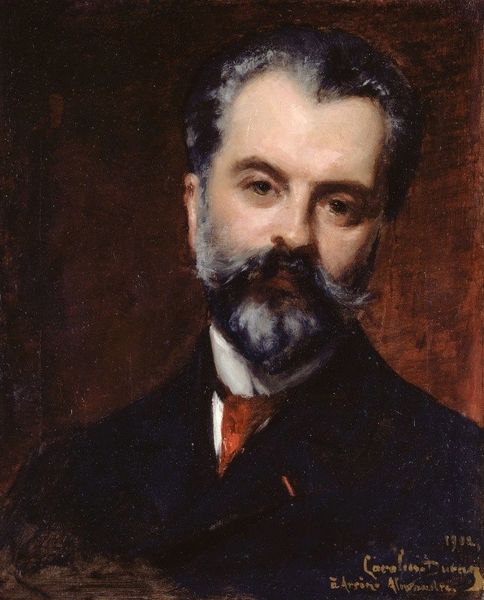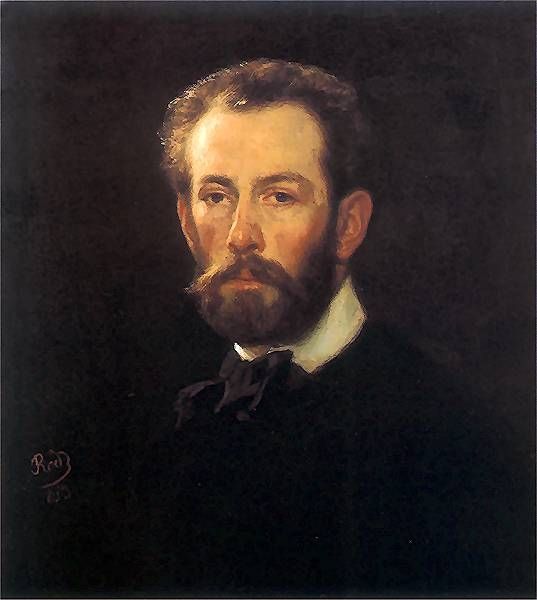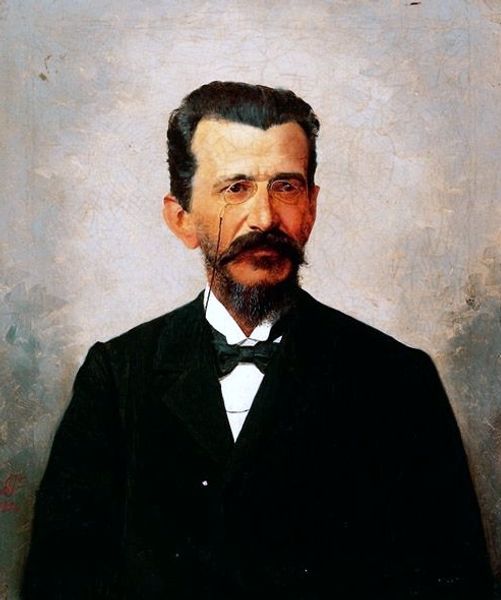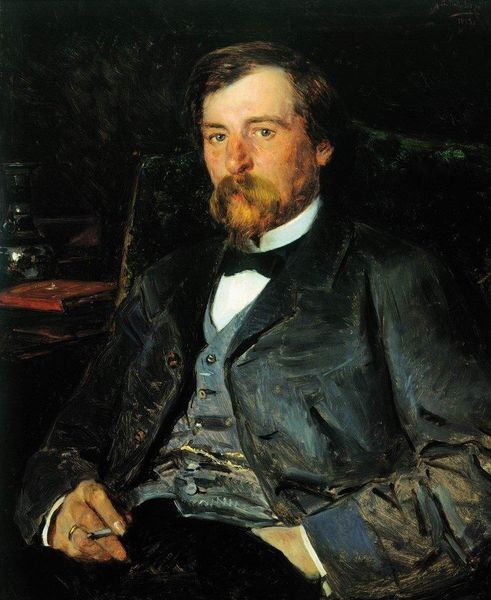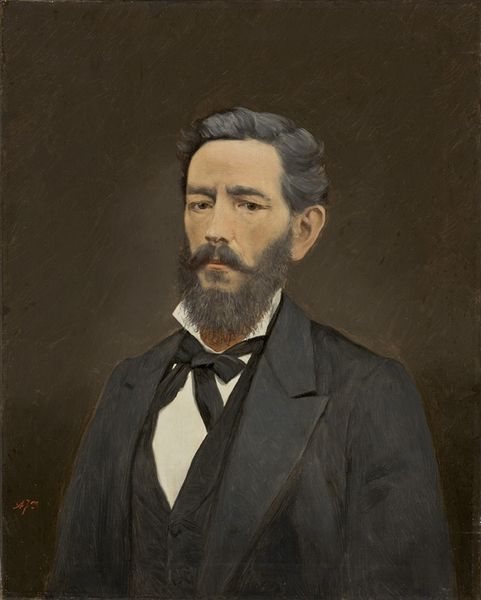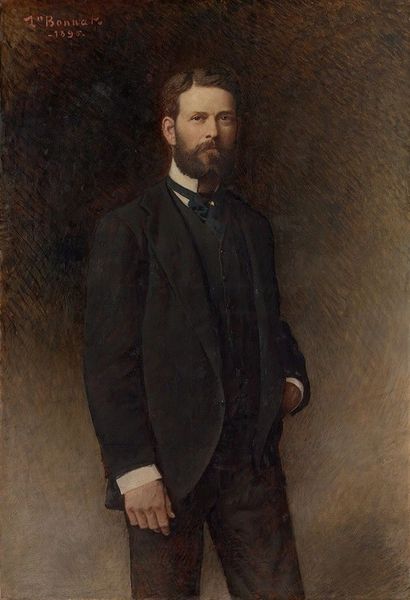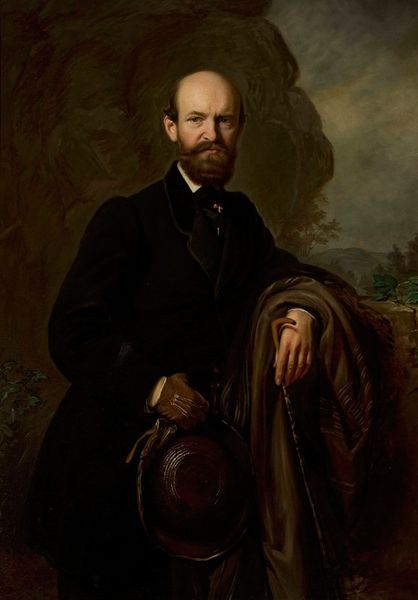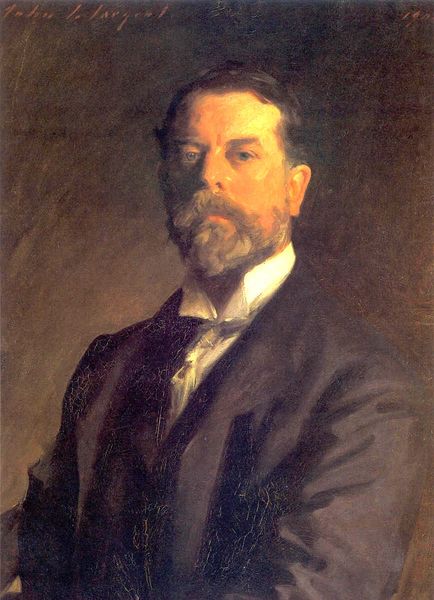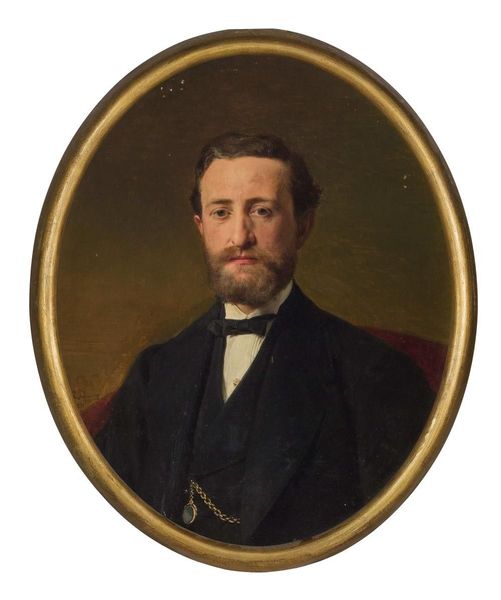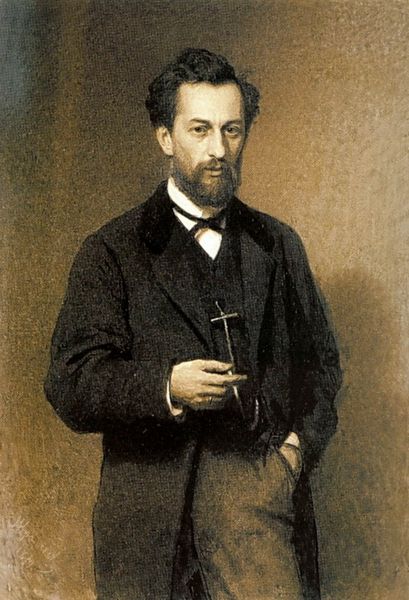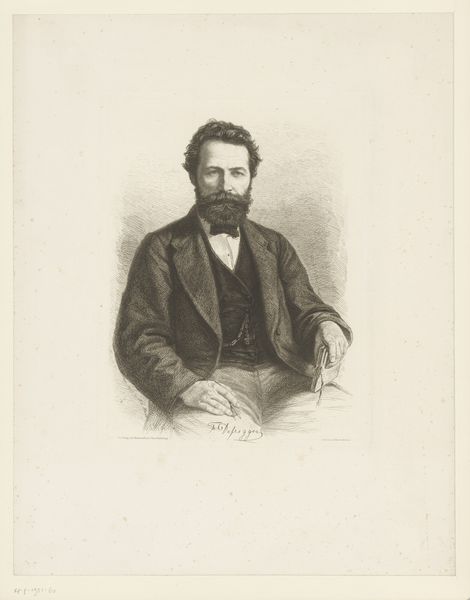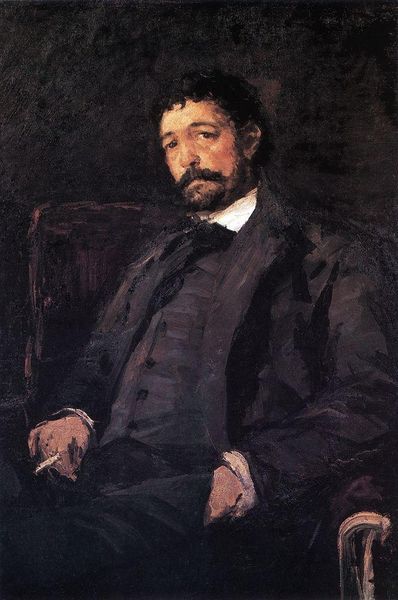
Copyright: Public Domain: Artvee
Editor: Here we have Anton Romako's "Portrait of Architect Johann De Colle," painted sometime between 1840 and 1889, using oil. I’m immediately struck by the warm tones and how they make the figure appear both distinguished and contemplative. What do you see in this piece? Curator: For me, portraits are always about cultural memory, and how societies choose to represent themselves. Notice the subtle turn of the head, the soft light…Romako seems to be consciously positioning De Colle within a particular lineage of intellectual portraiture. It’s not just a likeness; it’s an ideal. Editor: An ideal, how so? Curator: Well, consider the symbols. A dark suit was very common at that time but symbolizes respectability, success. It tells us something about how architects were perceived and how they perceived themselves within society. But also observe his wistful expression and upward gaze... it indicates his mind and spirit are dwelling somewhere else beyond earthly constrains. Editor: I didn't really catch that on first view, now that you mention it the artist could be trying to show his subject's yearning for bigger and better things... It also now reminds me a bit of paintings of philosophers and scientists that wanted to reflect something bigger! Curator: Precisely! And that subtle psychological depth is crucial. Editor: It’s amazing how much can be communicated through seemingly simple choices, such as the sitter's pose. This discussion has helped me better read the painting, recognizing how artists actively built cultural symbols in the act of picturing someone. Curator: Indeed. And that interplay between the individual and the ideal is what makes portraiture so fascinating, as cultural representations, and how memory and expectation is passed through time.
Comments
No comments
Be the first to comment and join the conversation on the ultimate creative platform.

